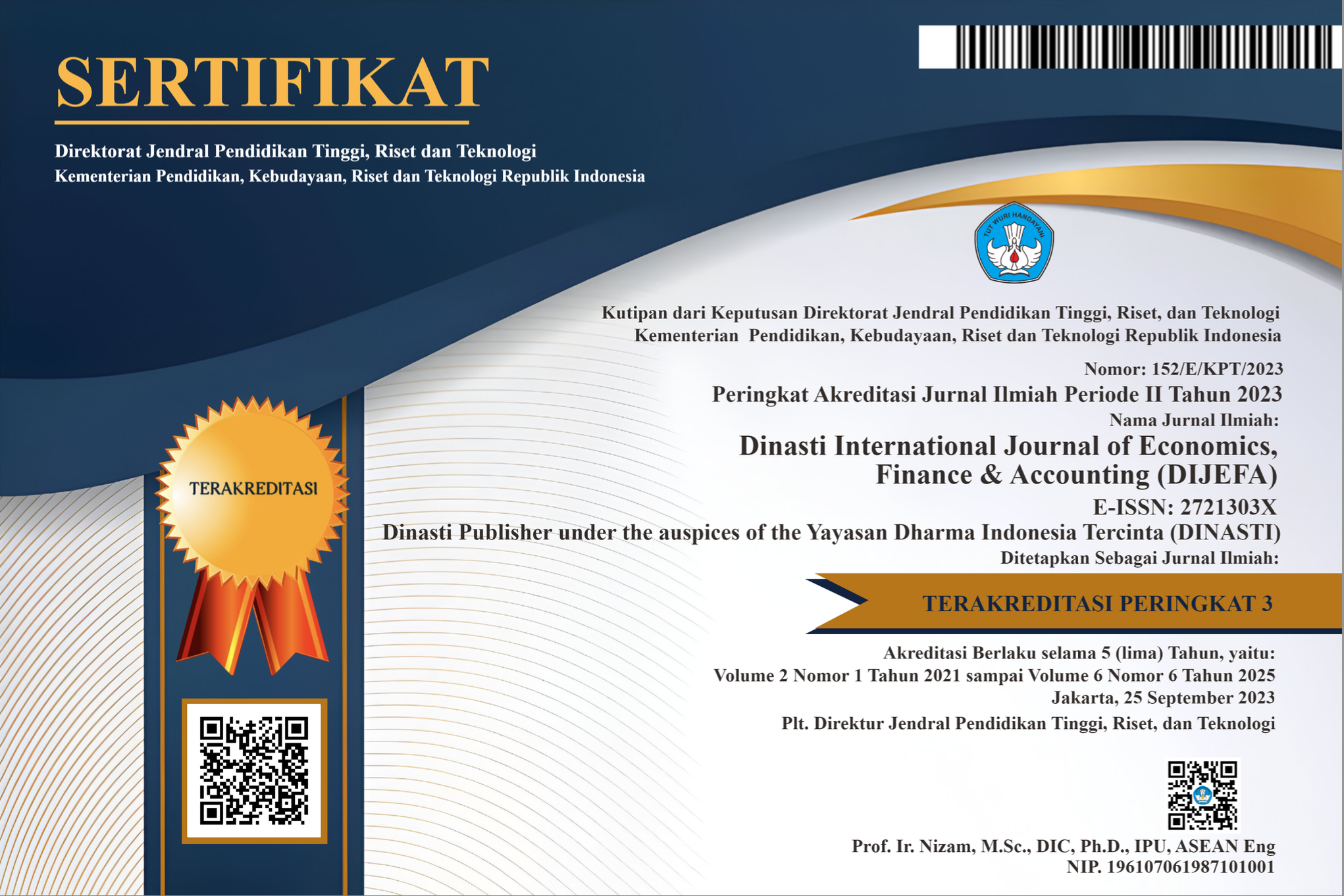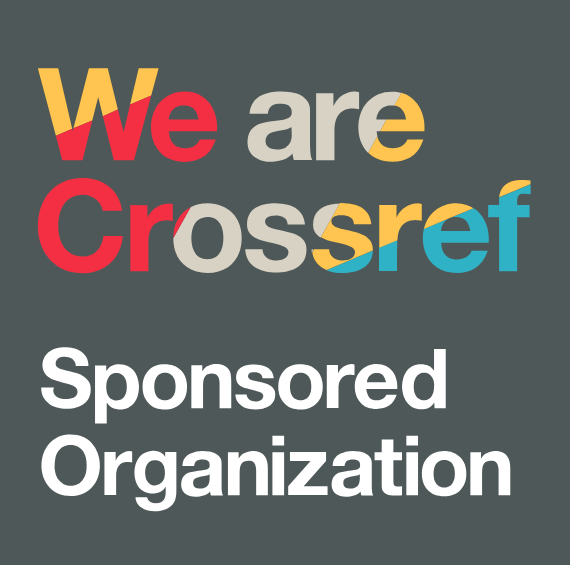Can Thin Capitalization And Transfer Pricing Activities Reduce The Tax Burden
DOI:
https://doi.org/10.38035/dijefa.v2i1.795Keywords:
manufacturing companies, quantitative-explanation, tax avoidance, thin capitalization, transfer pricing, institutional ownershipAbstract
The purpose of this research is to examine the effect of thin capitalization and transfer pricing as a vehicle for companies to reduce their corporate tax burden. The research method used is a quantitative-explanation, with the proxy of tax avoidance is ETR. This research found that thin capitalization activities and transfer prices have a negative and significant effect on tax avoidance. This research also found that institutional ownership strengthens the effect of thin capitalization and transfer pricing on tax avoidance. This research contributes to the literature on using the PLI ratio, namely ROCE as a measurement tool for transfer pricing activity, which provides a new methodological contribution to tax avoidance research through transfer pricing activities in Indonesia's manufacturing companies. This study proves that Return On Capital Employed can be used as a transfer pricing activity measure.
References
Barker, J., Asare, K., & Brickman, S. (2017). Transfer pricing as a vehicle in corporate tax avoidance. Journal of Applied Business Research, 33(1), 9–16.
Bezuidenhout, M. L. (2016). The relationship between CEO remuneration and company performance in South African state-owned entities. Dissertation University of South Africa, 371.
Chen, S., Chen, X., Cheng, Q., & Shevlin, T. (2010). Are family firms more tax aggressive than non-family firms? Journal of Financial Economics, 95(1), 41–61.
Chung, K. H., & Zhang, H. (2011). Corporate governance and institutional ownership. Journal of Financial and Quantitative Analysis, 46(1), 247–273.
Cobham, A., & Janský, P. (2017). WIDER Working Paper 2017 / 55 Global distribution of revenue loss from tax avoidance Re-estimation and country results. March, 1–28. https://www.wider.unu.edu/publication/global-distribution-revenue-loss-tax-avoidance
Daito, A. (2007a). Metodologi Penelitian Penyusunan Skripsi. Universitas Budi Luhur.
Daito, A. (2007b). Petunjuk Penulisan Skripsi (Doctoral dissertation, Tesis, Disertasi). Universitas Budi Luhur: Fakultas Ekonomi.
Daito, A. (2011). Pencarian Ilmu Melalui Pendekatan Ontologi, Epistimologi, Aksiologi. Mitra Wacana Media.
Desai, M. A., Foley, C. F., & Hines, J. R. (2006). Do tax havens divert economic activity? Economics Letters, 90(2), 219–224.
Dyreng, S. D., Hanlon, M., & Maydew, E. L. (2008). Long-run corporate tax avoidance. Accounting Review, 83(1), 61–82.
Eviews. (2020). User's Guide?: Panel and Pooled Data?: Panel Estimation?: Estimating a Panel Equation. Http://Www.Eviews.Com. http://www.eviews.com/help/helpintro.html#page/content/pool-Pooled_Estimation.html%23ww187602
Grubert, H., & Mutti, J. (1991). Taxes, Tariffs and Transfer Pricing in Multinational Corporate Decision Making. The Review of Economics and Statistics, 73(2), 285.
Gujarati, D. N., & Porter, D. C. (2012). Dasar-Dasar Ekonometrika Buku 1&2 (5th ed.). Salemba Empat.
Hanlon, M., & Heitzman, S. (2010). A review of tax research. Journal of Accounting and Economics, 50(2–3), 127–178.
Henry, E., & Sansing, R. (2018). Corporate tax avoidance: data truncation and loss firms. Review of Accounting Studies, 23(3), 1042–1070.
Jaros, J., & Bartosova, V. (2015). To the Capital Structure Choice: Miller and Modigliani Model. Procedia Economics and Finance, 26(15), 351–358.
Jensen, M. C., & Meckling, W. H. (1976). Theory Of The Firm: Managerial Behavior, Agency Cost And Ownership Structure. Jurnal of Financial Econopmics, 3, 305–360.
Kaiser, L. (2006). Agency Relationship and Transfer Pricing Inefficiency. Acta Oeconomica Pragensia, 14(3), 73–81.
Khan, M., Srinivasan, S., & Tan, L. (2017). Institutional ownership and corporate tax avoidance: New evidence. Accounting Review, 92(2), 101–122.
Khurana, I. K., & Moser, W. J. (2009). Institutional Ownership and Tax Aggressiveness. SSRN Electronic Journal, 573, 0–42.
Khurana, I. K., & Moser, W. J. (2013). Institutional shareholders' investment horizons and tax avoidance. Journal of the American Taxation Association, 35(1), 111–134.
Lee, B. B., Dobiyanski, A., & Minton, S. (2015). Theories and Empirical Proxies for Corporate Tax Avoidance. Applied Business and Economics, 17(3), 21–34.
OECD. (2013). Addressing base erosion and profit shifting. In Addressing Base Erosion and Profit Shifting (Vol. 9789264192). OECD Publishing.
Parmar, B. L., Freeman, R. E., Harrison, J. S., Wicks, A. C., Purnell, L., & de Colle, S. (2010). Stakeholder theory: The state of the art. Academy of Management Annals, 4(1), 403–445.
Rectenwald, G. (2012). A proposed framework for resolving the transfer pricing problem: Allocating the tax base of multinational entities based on real economic indicators of benefit and burden. Duke Journal of Comparative & International Law, 22, 425–449.
Richardson, G., Taylor, G., & Lanis, R. (2013). Determinants of transfer pricing aggressiveness: Empirical evidence from Australian firms. Journal of Contemporary Accounting and Economics, 9(2), 136–150.
Ross, A. S., Westerfield, R. W., & Jordan, B. D. (2003). Fundamentals of Corporate Finance (6th ed.). Mc Graw-Hill.
Smart, M. (2012). The application of the theory of planned behaviour and structural equation modelling in tax compliance behaviour: A New Zealand study (Unpublished doctoral thesis), University of Canterbury. The University of Canterbury.
Steyn, J. P. (2012). Using Capital Intensity and Return on Capital Employed as filters for security selection. Thesis University of Stellenbosch, December, 1–119.
Taylor, G., & Richardson, G. (2012). International Corporate Tax Avoidance Practices: Evidence from Australian Firms. International Journal of Accounting, 47(4), 469–496.
The Platform for Collaboration on Tax. (2017). A toolkit for addressing difficulties in accessing comparables data for transfer pricing analyses. 237. https://www.tax-platform.org/sites/pct/files/publications/116573-REVISED-PUBLIC-toolkit-on-comparability-and-mineral-pricing.pdf
Turner, G. (2017). Shifting profits and dodging taxes using debt. 4. https://www.taxjustice.net/wp-content/uploads/2017/11/Dodging-taxes-with-debt-TJN-Briefing.pdf
Waluyo, W., & Doktoralina, C. M. (2018). Factors affecting tax avoidance through thin capitalization: Multinational enterprises in Indonesia. International Journal of Management and Business Research, 8(3), 210–216.
Downloads
Published
How to Cite
Issue
Section
License
Authors who publish their manuscripts in this journal agree to the following conditions:
- The copyright on each article belongs to the author(s).
- The author acknowledges that the Dinasti International Journal of Economics, Finance & Accounting (DIJEFA) has the right to be the first to publish with a Creative Commons Attribution 4.0 International license (Attribution 4.0 International (CC BY 4.0).
- Authors can submit articles separately, arrange for the non-exclusive distribution of manuscripts that have been published in this journal into other versions (e.g., sent to the author's institutional repository, publication into books, etc.), by acknowledging that the manuscript has been published for the first time in the Dinasti International Journal of Economics, Finance & Accounting (DIJEFA).


























































